Posts Tagged: blackberry
Heat Induced Pollination Problems in Blackberry
Interesting case documented in the pictures below of PrimeArk 45 blackberry in which the fruit did not pollinate very well. The issue is limited to one area of the field, where the grower suspects it wasn't quite moist enough during the hot spell of two weeks ago.
The problem does seem to be limited to a certain age of fruit in that area of the field, and if one recalls two weeks ago during this hot spell we didn't have much customary cooling at night.
This makes sense, since as readers know, high temperatures reduce the amount of viable pollen and consequently the success rate of germination on the pistil. It is good to know as a field diagnostician that the peripheral pistils on the flower become receptive first, and as a rule not all pistils are receptive at the same time. This goes some length to explaining the unevenness of pollination and subsequent lack of druplet formation.
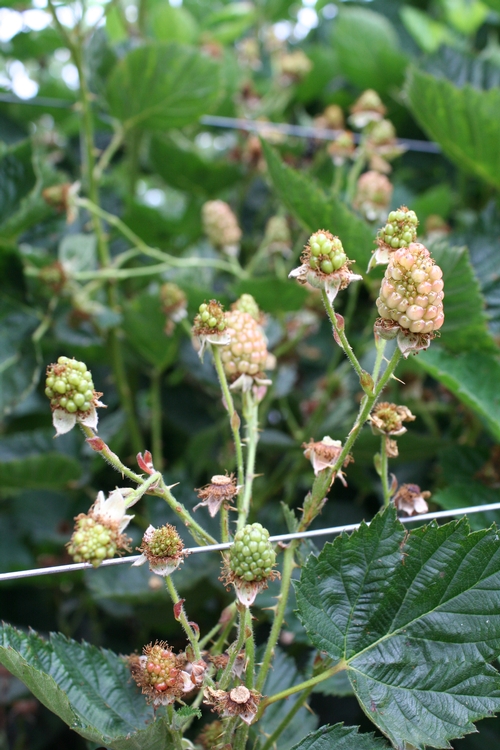
Blackberry fruit, some properly pollinated, others not. Note the differences in age of fruit (oldest fruit was harvested - note remaining pedicels) and number of formed drupelets, a strong indication that a single event is responsible for this insufficiency of pollination.

Blackberries not properly pollinated - heat and possibly an insufficiency of water is at cause for this failure to make.
Post harvest Powerpoint for Raspberries and Blackberries
Excellent Powerpoint given by UC Davis' Marita Cantwell at Oleg Daugovish's caneberry meeting this past April. Probably the best you are going to find anywhere concerning post harvest handling of these delicate fruits:
http://ceventura.ucanr.edu/files/188522.pdf
Webinar for Organic Blackberry Production
Webinar on Organic Blackberry Production-- March 13
You are invited to take part in a webinar on "Organic Blackberry Production: Tips learned from an ongoing research study", presented by Bernadine Strik and Luis Valenzuela of Oregon State University and David Bryla of the USDA ARS in Corvallis, Oregon. The webinar takes place on March 13, 2014 at 2PM Eastern Time (1PM Central, 12PM Mountain, 11AM Pacific Time). Audience members will be able to type in questions for the speakers. The webinar is free and open to the public, but advance registration is required.
Register now at: https://www1.gotomeeting.com/register/363427577. Visit http://www.extension.org/pages/70279/organic-blackberry-production:-tips-learned-from-an-ongoing-research-study to learn more, including system requirements for participating.
Use of glyphosate (Roundup) to control field bindweed in blackberries
Field bindweed, Convolvulus arvensis, also known locally as morning glory, is a persistent weed pest in blackberries grown on the Central Coast of the California. Much of this stems from the long period of time between plant establishment and final removal of the crop some five to six years later.
While cultivation of the aisles between the hedgerows is successful in keeping the field clear of most weeds, field bindweed is another matter. Not only does field bindweed establish very deep root systems which frustrate control by cultivation, but the lengthy vines of this plant grow into the hedgerow and even up onto the plants themselves (Photo 1). Spray applications of translocated herbicides like Roundup are risky due to sensitivity of blackberry to spray drift. For this reason we have selected ropewick application methods to reduce the possibility of spray drift and crop injury.
The study described here is an experiment of two methods of wick applications of glyphosate (Roundup). One method, pictured below, is of a ropewick applicator (Photo 5) which applies a 33% volume per volume (v/v) dilution of formulated product through the ropewick applicator directly to the bindweed leaves by briefly passing over the area in a purposeful back and forth swinging motion. The second method, used occasionally on woody vines which die slowly, was to clip approximately 1”x1” sponges soaked with a 33% v/v dilution of formulated product with colorful refrigerator magnet clips to individual bindweed leaves (Photo 3). In both cases, great care was taken to avoid contact with blackberry plant parts, especially canes hanging down close to the ground. Please note – blackberry is very sensitive to Roundup (Photo 7) and contact with foliage must be absolutely avoided.
As can be seen from the pictures below (Photo, 3, 4 and 5), after two weeks both methods are quite effective in controlling field bindweed in blackberries. It should be noted that the clip method, while quite effective in controlling field bindweed, is far more time consuming than the ropewick applicator and not recommended.
It is lastly important to note that regular retreatment of the field bindweed especially in the fall will be more successful with the ropewick method described here. One should treat regularly but not too frequently and every month to six weeks should work. Let the bindweed regrow some, since it is going into the fall and it is storing starch reserves for its roots. As the bindweed makes sugars in its leaves it is sending that sugar downward into its roots deep in the ground, and this is the time to send some glyphosate into those roots. These roots are the bindweed wheelhouse and this is where to hit it where it hurts.
The use of glyphosate (Roundup) is extensively written about in this article. Before using any of these products, check with your local Agricultural Commissioner's Office and consult product labels for current status of product registration, restrictions, and use information.
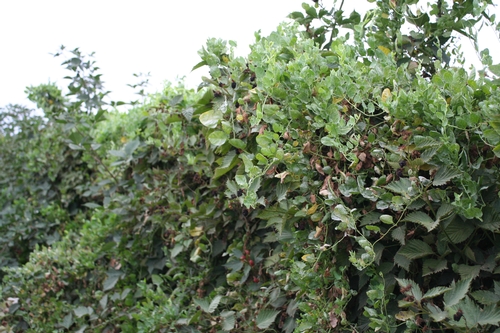
Photo 1: Blackberry hedgerow totally overgrown with field bindweed.
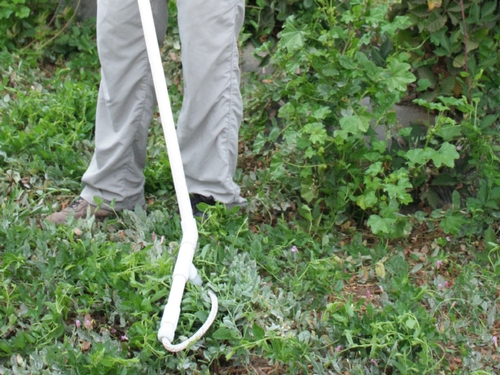
Photo 2: Demonstration of ropewick applicator. Roundup mix, stored in handle, seeps out rope at bottom of applicator.
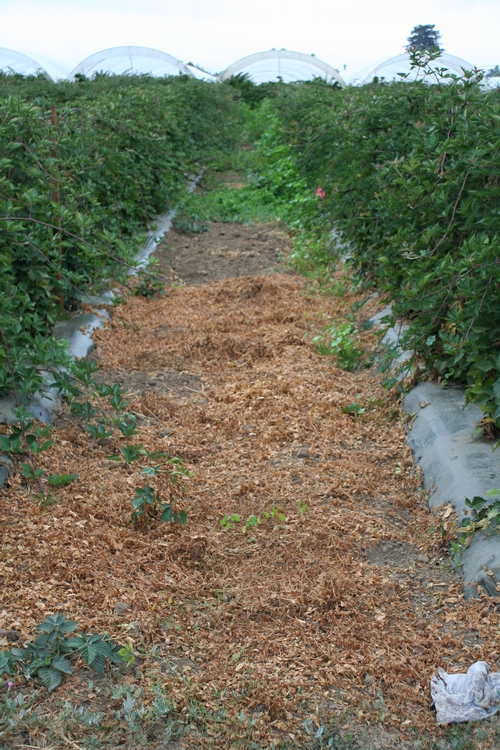
Photo 3: Roundup treated area two weeks post-application.
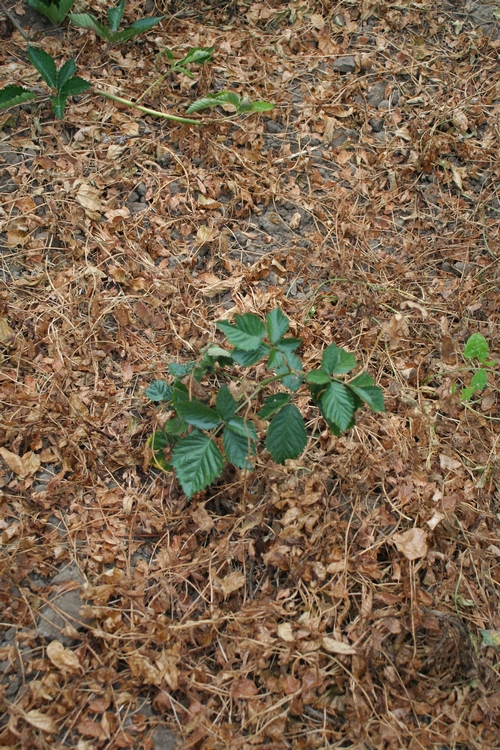
Photo 4: Blackberry primocane in midst of glyphosate killed bindweed. Plant was not touched by the herbicide.
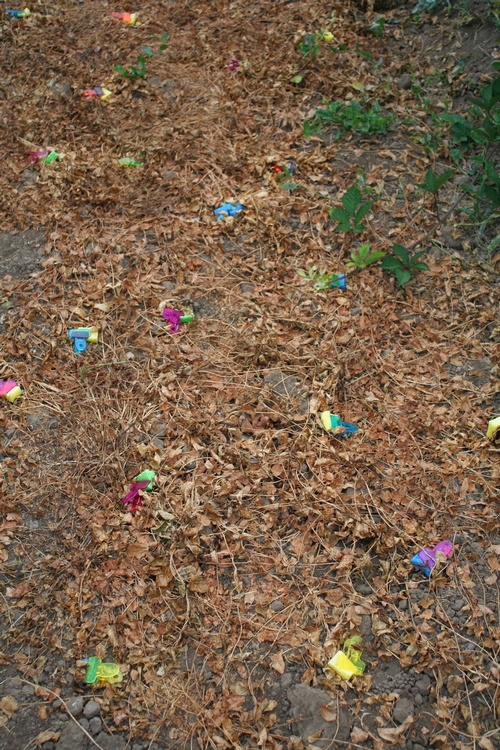
Photo 5: Field bindweed plants two weeks after having been treated with Roundup saturated sponges clipped onto individual leaves.
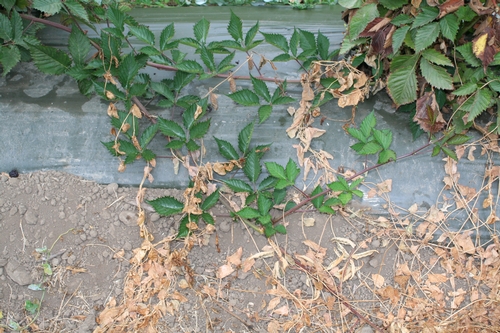
Photo 6: Bindweed vine arising from plants treated by ropewick application interspersed among healthy blackberry canes.
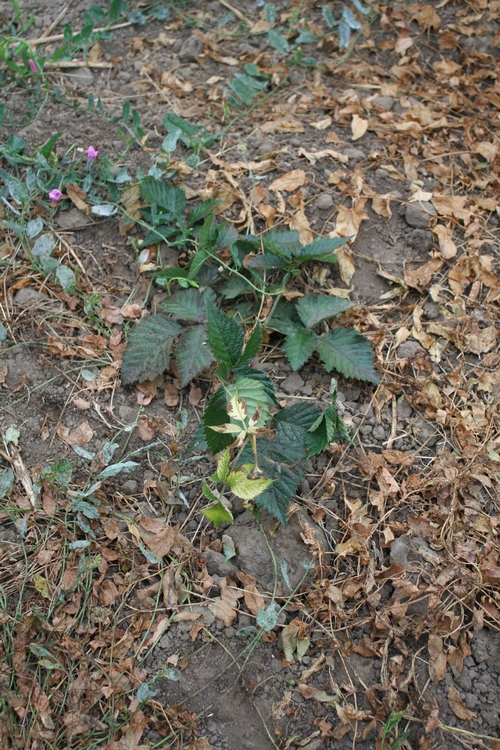
Photo 7: Glyphosate damage on blackberry - very sensitive.
New Primocane Blackberry Variety Prime Ark 'Freedom'
Really nice video clip on the new Prime Ark 'Freedom' variety just released by John Clark from the University of Arkansas breeding program. It's the first commercially available thornless primocane bearing blackberry.
Please take note growers that this variety is very much oriented to the home gardener and not intended for large scale production for shipping.
Very nice explanation too by Dr. Clark on the difference between primocanes and floricanes. Have a look.

